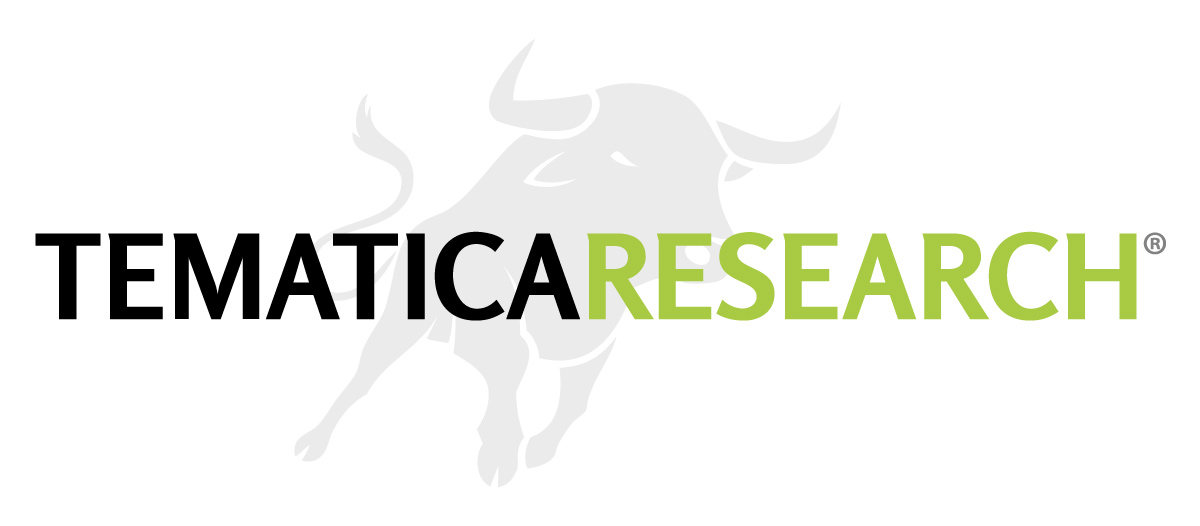Did Last Week’s Turmoil Light the Flames of Volatility?
DOWNLOAD THIS WEEK’S ISSUE
The full content of The Monday Morning Kickoff is below; however downloading the full issue provides detailed performance tables and charts. Click here to download.
A Fresh Round of Uncertainty Injected Into The Market
In last week’s issue of the Monday Morning Kickoff, we shared our view that we were likely to see volatility pick up. The two main factors behind that prediction were the realities of being in the midst of the dog days of summer, which tend to have thinner trading volumes as investors hit the beaches, as well as preparation for the month of September, historically one of the tougher months for the market. All that was needed was a catalyst to light the fuse. Well, that match was certainly struck last week.
As Tematica’s Chief Macro Strategist Lenore Hawkins discussed last Friday on Fox Business’s Varney & Co., who would have thought that in just one week we could experience talk of a nuclear showdown with North Korea, chaos in Charlottesville leading to a brutal murder, an administration becoming increasingly isolated both inside and outside the beltway and yet another terror act in Europe?
On Thursday, the markets’ response to such turmoil and uncertainty caused the S&P 500 and Nasdaq to drop below their 50-day moving averages. 457 of the S&P 500 stocks closed in the red for the day, while the Dow Jones Industrial Average experienced its worst day in three months, ending its 64-day streak of sub 1 percent intraday moves. The median S&P 500 stock hasn’t moved since mid-June and is more than 7 percent below its 52-week high. Small cap stocks have also been hit hard, with the S&P 600 down 6.4 percent from its recent highs as the index sits today right about where it was in early December 2016 and the Russell 2000 has dropped below its 200-day moving average for the first time in over a year.
Per financial headlines, Thursday’s 275 point drop in the Dow Jones Industrial Average was due to growing concern that Congress and the GOP may be less inclined to work with the president. These concerns stem from the backlash towards the Trump Administration following the events in Charlottesville, VA, that led President Trump to dissolve two CEO advisory groups, and thus puts expected tax reform and infrastructure spending efforts in doubt, at least in the near-term.
Pinpointing these concerns was the comment by Republican Senator Bob Corker who said:
“The president has not yet been able to demonstrate the stability nor some of the competence that he needs to demonstrate in order to be successful … And we need for him to be successful. Our nation needs for him to be successful.”
While the White House responded to the public outcry with the removal of Steve Bannon on Friday, we suspect that following post-Charlottesville commentary, it will take far more to smooth things over between the president and Republicans, and even more so when it comes to Democrats.
As a reminder, we have a number of elections in the House and Senate this November. Given Trump’s low approval ratings, we suspect that much political muck raking will be had in the coming weeks. This, of course, raises questions over pending tax reform and infrastructure spending, as well as other items that were slated to help kick-start the domestic economy and spur job creation. Remember, we’re not only seeing mixed economic data, but the Fed is poised to embark on unwinding its balance sheet, a likely headwind to the economy.
With a fresh round of uncertainty injected into the market, we’re going to remain cautious as it relates to the Tematica Select List over the coming weeks. As we do this, we’ll continue to look through our thematic lens for useful data points, looking for support points for potential new positions as well as signs that we should consider exiting current ones.
In other words, business as usual for us here at Tematica.
Putting the Recent Market Dynamics In Perspective
We typically experience a 5 percent pullback every 50 days, yet this market hasn’t seen that in 283 days. A 10 percent pullback occurs on average every 167 days, yet this market has gone 378 days. As for correction territory — a 20 percent pullback — the average is every 635 days, yet we have not gone there in 2,123 days.
Perhaps this is part of the reason why the recent Bank of America Merrill Lynch global fund manager survey found that a record high 46 percent of managers see global stocks market as overvalued, a higher percentage than in 2000 and 2007. Just one-third of managers expect to see an improvement in the markets from here, which is a 25 percent from the start of 2017.
With Walmart’s (WMT) reporting last Thursday, earnings season has come to an end. The beat rate this season for earnings was at the lower end of the range we’ve seen in the past six years at 59.3 percent. Revenue beats, on the other hand, were at the higher end of the range at 60.7 percent. While guidance was particularly strong this season, the average company saw its stock price decline 0.83 percent on earnings reaction day. The average tech stock lost twice as much at -1.68 percent. The only sector to see the average stock price rise on reaction day was Utilities, which isn’t exactly a bullish signal. This indicates to us that an awful lot of optimism has been baked into to share prices.
We are now entering what is typically the most volatile and worst performing part of the year from latter part of August through all of September and as we do so, the S&P 500 just ended a 196-day streak of consecutive trading days without entering oversold territory. That is the ninth longest streak on record.
On the Economic Front
- Last Tuesday’s headline Retail Sales data looked pretty solid. Going a bit deeper, however, we find the details are less rosy and the lack of corroborating data led us to discount the utility of the month’s report, as we discussed in the article July Retail Sales Contradict Retailers on com this past week. With consumers accounting for roughly 70 percent of the economy, we are concerned when we see negative trends in the production of consumer items.
- Wednesday’s Industrial Production report reveals that output production of consumer durable goods declined 1.9 percent in July, having now declined for three consecutive months and four of the past five. Year-over-year it is down 1.5 percent, which to put it in context, is even worse than the 1.2 percent decline in December of 2007 and the 1.6 percent decline in October 2000.
- The auto sector pain looks to be increasing. Auto production in July was down 5 percent year-over-year, a rate of decline we haven’t seen since the Great Recession. Truck assemblies in July were down 10 percent from the October 2016 peak and auto assemblies down 42.5 percent from May 2015 peak.
- Housing also showed signs of weakness with starts dropping 4.8 percent in July with starts under construction unchanged from last December and declining four of the past five months.
Growth of consumer spending is a function of growth in income and growth in credit, so perhaps the weakness in the consumer realm is related to the lack of wage growth. According to the Atlanta Fed wage tracker, full-time workers are experiencing slowing wage growth in recent months, from a 3.8 percent annual rate in April to a 3.5 percent rate in July. Wage growth for college grads has slowed from 3.5 percent in December to 3.2 percent. For those staying in their current job rather than searching for greener pastures elsewhere, wage growth is a mere 2.9 percent and the level of voluntary job quitters, (typically a sign of confidence in the job market) has dropped 10 percent year-over-year in July and is now at the lowest level since May 2007.
Consumer credit, the other part of the consumer spending equation, has seen a second consecutive all-time high in consumer credit outstanding. 90+ day delinquencies among auto loans are rising quickly towards recessionary levels, which is likely causing the increase in median credit scores at auto loan origination. Student loans, credit cards, and even the mortgage market are seeing rising delinquencies rates. More headwinds to spending growth.
We are also seeing negative trends in the rate of production of investment goods, which represents about 10 percent of the economy. Wednesday’s Industrial Production report also found that production of business equipment contracted 0.5 percent in July and is now down in two of the past three months at a 7.4 percent annual rate over that period. This confirms the discussion in this week’s Federal Reserve Open Market Committee Meeting notes which discussed concerns over a freeze in capex plans because of the level of political uncertainty. The events over the past week certainly did not improve things on that front.
Confirming Thematic Data Points Abound
Looking past the hard economic data, there were a number of developments last week that reinforced several of our other investment themes. News that Apple (AAPL) would spend $1 billion on developing proprietary programming, like we’ve seen at Netflix (NFLX) and Amazon (AMZN), reinforced the view that yes, Content is King. The news that movie studios are “looking to set up early-access rentals with companies like Apple and Comcast (CMCSA) may reportedly push ahead with those negotiations and skip revenue sharing with theater chains” served to confirm a next wave of creative destruction to be had by the intersection of our Content is King and Connected Society investment themes.
Last week, Applied Materials (AMAT) gave an upbeat earnings report led by the pronounced demand for organic light emitting diode displays, one aspect of our Disruptive Technologies theme. On its earnings call last week, Applied shared the following:
“Display is growing even faster than wafer fab equipment as customers make multi-year investments to address large inflections in both TV and mobile. In TV, a major push to new Gen 10.5 substrates is under way. These huge, 10 square meters substrates are ideally suited for manufacturing larger format screens, 60 inches and bigger. We now expect 30 new Gen 10.5 factories to be built over the next several years. At the same time, mobile organic light emitting diode (OLED) display investment is getting stronger as customers prepare for broad adoption of OLED in smartphones. OLED enables new form factors that result in a larger display area for smartphones, further expanding the overall market.”
We could not have summed it up better ourselves, and those comments keep both Applied Materials as well as Universal Display (OLED) on the Tematica Select List.
Inside the manufacturing data from last week, which has shown essentially no output growth since February, there was one bright spot in our Safety and Security investment theme as the production of Defense and Space equipment rose 0.3 percent in July after a 1.1 percent increase in June. The recent warning by the Ukraine central bank over cyber-attack risks, the actual cyberattack on the Scottish parliament, and the cyberattack that affected a database of 55 million voters at the Philippines Commission on Elections and the National Payment Corporation of India reminds of the ongoing and global nature of this theme.
The Week Ahead
As we enter the week, we’ll be watching for any political fallout to determine what kind of footing the stock market will find itself. With that in mind, we’ll also be eyeing Monday’s joint military exercises between the US and South Korea that are could elicit some response from North Korea. Should North Korea put on a demonstration, it likely means we’re in for another round of turbulence for at least the start of next week.
The coming five days will be slower on the economic front, but we will receive several key pieces of data nonetheless.
We have several housing data points on tap including the latest on New Home and Existing Home Sales. While we will examine these two data points, the two sets that we’ll be scrutinizing more will be the July Durable Orders report and the August Flash PMI reports from Markit Economics.
The July Durable Orders report will put some context around last week’s July Industrial Production report, while the August Flash PMI will give us our first look at how August economic activity faired not only in the U.S., but in Europe and Japan as well. Given moves in the dollar, we’ll be looking at changes in U.S. export orders and what that could mean for 3Q 2017 GDP. As we dissect these economic indicators, we’ll also be monitoring weekly rail traffic data, truck tonnage and other indicators as we triangulate the current vector and velocity of the domestic economy.
Internationally we’ll get UK GDP numbers next Thursday and Germany on Friday as well as EU Markit PMI and Consumer Confidence. The week will also give us data on Japan’s Manufacturing PMI and CPI. To put the global economic data in context, the U.S. is currently in its 97th month of this expansion, the third longest since the Civil War, while the Eurozone is only in its 52nd month and Japan in its 35th which helps explain why Spain’s second quarter GDP was the strongest it has experienced in two years, France the best in six and the Netherlands the best in 10 years while Italy has not expanded for 10 consecutive quarters.
From an earnings perspective, the velocity of reports is ticking down, but as we’ve come to accept, even in a trickle of reports there are ones worth watching. During this second to last week of summer, we’ll be tuning into results from Coty (COTY) for data points on the Affordable Luxury investment theme. We’ll also be checking in on the health of the Rise & Fall of the Middle-Class with earnings from Toll Brothers (TOL) and National Beverage (FIZZ) to see how it’s transition toward a Food with Integrity company is progressing. Given the Connected Society investment theme headwind that many brick & mortar retailers are facing, we’ll be parsing through results from Guess (GES), Abercrombie & Fitch (ANF), Michaels Stores (MIK), Gamestop (GME), Ulta Beauty (ULTA) and others to see if and how they and others are staving off that headwind. Our suspicion is branded apparel such as Van Heusen, Tommy Hilfiger, Calvin Klein, IZOD, Arrow found at Asset-Lite investment theme company PVH (PVH) will fare far better, but we’ll be comparing and contrasting the data to validate that view.
During the week, be sure to check TematicaResearch.com for our latest economic insights and Thematic Signals, as well as this week’s Cocktail Investing podcast.



